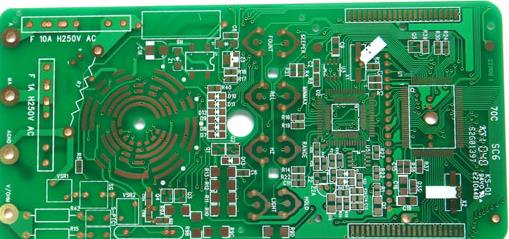With the rapid development of 3C products and the electronicization of traditional home appliances, the application range of printed circuit boards has become more and more extensive. The printed circuit board is generally referred to as PCB (PrintedCircuitBoard) or PWB (Printedwireboard). It is a basic component in the electronics industry. This component is used in 3C products such as electronic watches, mobile phones, computers, and even military weapons. PCB traces can be seen on, communication equipment, and space shuttles.
PCB was first adopted by Austrian Paul Eisler in radios in 1936. He used printed circuit boards to replace the traditional way of connecting electronic parts with wires. Later, in 1943, the United States applied the technology to military radios. As the technology gradually matured, the invention was officially popularized for commercial use in 1948. After Yijiazi's development, PCB has finally established an important position in the electronics industry.

Multilayer board increases wiring area, soft board breaks space limitations
At present, there are two main ways to classify PCBs: one is based on the number of layers, and the other is based on its softness and hardness. According to the number of layers, PCBs can be divided into single-sided, double-sided and multi-layer boards. Generally, multi-layer boards are mostly 4-layer or 6-layer boards, and the complex ones can even be as high as dozens of layers.
Single-sided PCB is the most basic PCB. As the name implies, its wires are concentrated on one side, and the parts are on the other side (but the patch parts will be on the same side as the wires). Because the single-sided board is limited by the area in the design, it is mostly only It can be used for simple circuits. Early electronic products or electronic products with less traditional changes mostly use single panels.
The double-sided board has wires on the upper and lower layers, and the wires on the upper and lower layers are connected to each other through via holes. Therefore, the double-sided board of the same size will have twice the wire design area than the single-sided board, and it can also solve the problem of more electromagnetic interference caused by the interlacing of the wires in the single-sided board, so it is suitable for more complex PCB designs.
The multi-layer board is a combination of single and double panels, which can increase more wiring area. Usually the most common is to use two double-layer boards as the inner board, and then use two single-layer boards on the outside, and then combine the positioning system with the insulating adhesive material to form a four-layer multi-layer board.
In addition, it can be classified into rigid circuit boards, flexible circuit boards, and rigid-flex boards. The thickness of the rigid circuit board usually ranges from 0.2mm to 2.0mm, while the flexible circuit board is usually 0.2mm, and then it is thickened where welding is required. The emergence of flexible circuit boards is mainly due to the limited space of the mechanism, so it is necessary to use a bendable PCB to meet the space requirements. The material of soft PCB is mostly polyester film, polyimide film and fluorinated ethylene propylene film.